You're using an outdated browser. Please upgrade to a modern browser for the best experience.

Submitted Successfully!
Thank you for your contribution! You can also upload a video entry or images related to this topic.
For video creation, please contact our Academic Video Service.
| Version | Summary | Created by | Modification | Content Size | Created at | Operation |
|---|---|---|---|---|---|---|
| 1 | Haripriya T Kumari | -- | 3244 | 2023-07-14 20:28:18 | | | |
| 2 | Camila Xu | -209 word(s) | 3035 | 2023-07-17 07:38:57 | | |
Video Upload Options
We provide professional Academic Video Service to translate complex research into visually appealing presentations. Would you like to try it?
Cite
If you have any further questions, please contact Encyclopedia Editorial Office.
Taki, A.; Kumari, H. Mashrabiya’s Impact on Energy Efficiency and Cultural Aspects. Encyclopedia. Available online: https://encyclopedia.pub/entry/46828 (accessed on 29 December 2025).
Taki A, Kumari H. Mashrabiya’s Impact on Energy Efficiency and Cultural Aspects. Encyclopedia. Available at: https://encyclopedia.pub/entry/46828. Accessed December 29, 2025.
Taki, Ahmad, Haripriya Kumari. "Mashrabiya’s Impact on Energy Efficiency and Cultural Aspects" Encyclopedia, https://encyclopedia.pub/entry/46828 (accessed December 29, 2025).
Taki, A., & Kumari, H. (2023, July 14). Mashrabiya’s Impact on Energy Efficiency and Cultural Aspects. In Encyclopedia. https://encyclopedia.pub/entry/46828
Taki, Ahmad and Haripriya Kumari. "Mashrabiya’s Impact on Energy Efficiency and Cultural Aspects." Encyclopedia. Web. 14 July, 2023.
Copy Citation
The traditional and indigenous architecture in Saudi Arabia is being replaced by modern, Western-style buildings, resulting from the growing influence of Western culture. This change is evident in architectural elements such as Mashrabiya, which was once a symbol of the country’s Islamic architecture.
Mashrabiya
Saudi Arabia
energy consumption
simulation
architectural identity
1. Introduction
The Middle Eastern regions, such as Saudi Arabia, are renowned for their harsh climatic conditions characterized by scorching heat, an arid sun, and minimal humidity levels [1]. To counteract the adverse impacts of such weather conditions, architects and building experts have put forward a plethora of passive design solutions that leverage indigenous materials and techniques [2]. Among them, one such innovative and historic sun-shading solution is the Mashrabiya, which was prevalent during the Middle Ages and persisted until the mid-20th century [3].
“Mashrabiya was a cantilevered space with a lattice opening where small water jars were placed to be cooled by the evaporation effect as air moved through the opening. Now the name is used for an opening with a wooden lattice screen composed of small wooden balusters that are circular in section and arranged at specific, regular intervals, often in a decorative and intricate geometric pattern” [4] (Figure 1). Figure 2 demonstrates the principal functions of Mashrabiya, which are: (a) controlling the passage of light, (b) controlling the air flow, (c) reducing the temperature of the air current, (d) increasing the humidity of the air current, and (e) ensuring privacy [4].
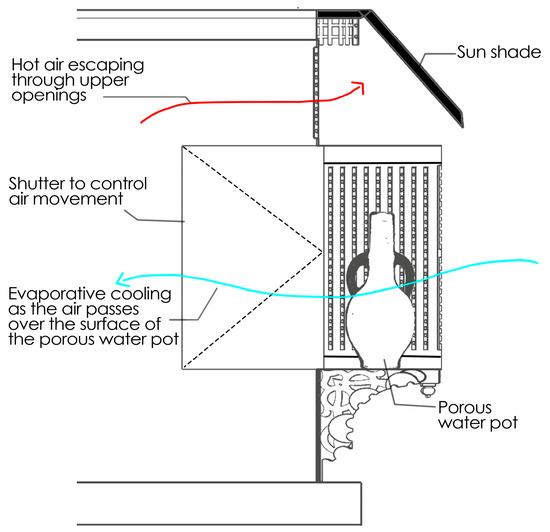
Figure 1. Indoor air-cooling system created by placing porous water jars in the Mashrabiya.

Figure 2. A schematic of a Mashrabiya showing its features and main functions.
Saudi Arabia (Figure 3), a nation with a wealth of cultural and historical legacies, has undergone significant transformation in recent years. The impact of Western culture on the architecture of Saudi Arabia has resulted in a transition towards modern styles influenced by personal preferences and media exposure [5][6]. This shift has replaced the once-prevalent traditional and indigenous architecture with Western-style buildings, which is observable in various architectural elements such as Mashrabiya [7], a proud symbol of the country’s Islamic architecture, which has now been replaced by contemporary elements.
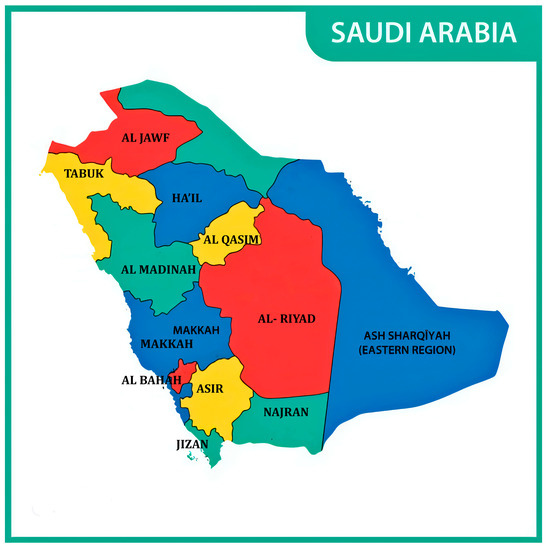
Figure 3. Map of the Kingdom of Saudi Arabia [8].
The significant economic growth of Saudi Arabia in recent years has led to an increase in domestic energy consumption [9][10]. The population of Saudi Arabia has been steadily increasing [11], and with it, so is the demand for housing and energy to power homes and buildings [12][13]. As of 2021, the volume of residentially consumed electricity in Saudi Arabia was approximately 142.48 terawatts per hour, which is a significant increase from 120.65 terawatts per hour in 2012 [14].
The government has launched new housing projects and initiatives to address the housing crisis, such as the “Vision 2030” programme, which aims to build 1.5 million housing units by 2030 [15]. In an effort to address the increase in domestic energy consumption, the government of Saudi Arabia has implemented several strategies and measures, one of which is to increase energy prices for consumers. In 2015, the government announced that it would be raising the price of electricity and water for households and businesses in order to reduce domestic energy consumption, which was met with some resistance from the public, as many people expressed that the increase in prices would be too high for them to afford [16].
2. Concept of Mashrabiya
The origin of the Mashrabiya in the Middle East can be traced back to its Arabic root word “Sharab,” meaning “To drink” [4][17][18][19][20]. Initially, Mashrabiya referred to a location where one could access water from a clay pot. Over time, it evolved into a functional element that combined wooden lattice panels with a clay pot, serving as a means to keep the water cool and provide a cooling effect [4][19][20].
Mashrabiya, distinctive features of Middle Eastern architecture, found widespread application in traditional houses due to their exceptional suitability for coping with the region’s dominant climatic condition: extreme heat. Unlike Western countries, where such conditions are less prevalent, the Mashrabiya’s popularity in the Middle East can be attributed not only to environmental factors but also to the cultural values embedded in the Middle Eastern society, which are heavily influenced by Islamic principles. Among them, one such value is privacy, which holds significant importance in Middle Eastern culture [19][20][21]. As a result, Mashrabiya effectively addressed both environmental and social concerns, making them an integral component of Middle Eastern architecture.
Over time, the expression of the “Mashrabiya” has undergone significant transformations, adopting diverse forms. Among these, the most renowned is the projecting bay window featuring timber panels constructed from lathe-shaped wooden balusters. These balusters are arranged in a lattice pattern, forming distinct geometric designs, and they are positioned at regular intervals [22].
A Mashrabiya offers occupants the benefit of privacy from external views while enabling them to observe the surroundings through the lattice. When the Mashrabiya faces the street, the spacing between the balusters is typically narrower at eye level, while the upper part, situated above eye level, would have a wider arrangement in order to facilitate sufficient airflow [23] (Figure 4). It can permit the passage of ambient light into spaces while preventing direct sunlight. In order to avoid optical discomfort due to glare, architects are advised to opt for Mashrabiya designs featuring balusters with a circular section, as specified by Fathy. This choice ensures the creation of gradual shadows, minimizing contrast and distinguishing it from shading devices utilizing square sectional balusters or similar alternatives [4].
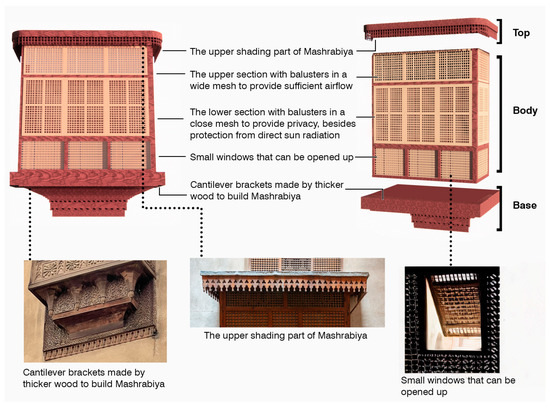
Figure 4. Components of Mashrabiya (Illustrated by author, referencing Abdelkader et.al. [20]).
3. Privacy
The significance of social values in Islamic culture cannot be overstated, and among these values, privacy holds a paramount position in Muslim households [23][24][25]. The traditional Mashrabiya, with its intricate lattice design, offered residents the necessary protection from outside prying eyes, while still affording them the opportunity to view their surroundings from the comfort and privacy of their own abode. It is notable that the spacing between the balusters of the Mashrabiya, when facing the street, is carefully considered, with a more closely spaced design at eye level and a more open design above eye level, as stated by Alothman and Akçay [23]. This intricate consideration of privacy in the design of the Mashrabiya highlights the importance placed on this cultural value in traditional Islamic architecture.
According to the Islamic religion, to preserve the modesty and seclusion of women, strict segregation between males and females is deemed necessary to preserve decorum [20]. This principle is reflected in the design, form, and function of both residential and public spaces, providing female occupants with the opportunity to experience outdoor life without attracting undue attention or compromising their privacy.
The significance of privacy has been further corroborated by a comprehensive study conducted by Alelwani et al. [3], which indicated that a significant majority of participants, amounting to 61.15%, held the strong belief that privacy holds utmost importance, whereas only a negligible proportion of 1.23% expressed the view that privacy is not a crucial factor.
4. Natural Lighting
A Mashrabiya plays a crucial role in regulating the amount of direct daylight that enters a building, with the design parameters determined by the architect [26]. During the summer, it helps block out the harmful sun rays, minimizes internal heat build-up, and still allows for an adequate amount of light to penetrate into the building. The presence of a Mashrabiya enables ambient light to permeate the interior space without admitting direct sunlight, hence reducing excessive glare, which can cause visual discomfort even though it does not raise the room temperature [27]. As a result, a Mashrabiya proves to be one of the most effective solutions to this issue. According to Fathy [4], the architect must select a Mashrabiya with a circular cross-section for the balusters, as this creates a gradual shadow that minimizes contrast. This is in contrast to square sectional balusters or similar shading devices that may cause sharp shadows. It is important to note that this condition is often overlooked in contemporary projects that utilize Mashrabiya, particularly when using steel in their construction, resulting in a recurrent mistake [28].
Mashrabiya are being reinvented by designers as high-tech daylight systems, often on a grand scale, utilizing computer technology. Their purposes extend beyond being oriental ornaments for covering tall buildings to being major responsive daylight systems [19]. Giovanni et al. [29] explore the possibility of designing a “Shape Variable Mashrabiya (SVM)” (Figure 5) for lighting and shading. The study compares its performance with standard Venetian blinds, and diffused daylight, and proves that, at low elevation angles, it provides sufficient daylighting under direct sunlight, in contrast to typical Venetian blinds.
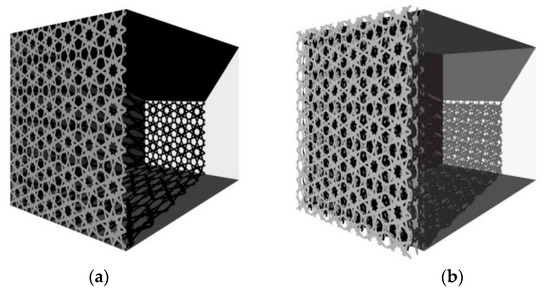
Figure 5. Images of the SVM [29]: (a) opened; (b) closed.
A follow-up research paper by the same authors in 2015 [30] demonstrated the SVM’s ability to provide significant quantitative advantages in terms of daylighting, energy savings, and visual comfort for users by controlling glare. It reduced the primary energy required for lighting by up to 65.7% compared to reflective glazing with 16% light transmittance (RG16) and 30.7% compared to Venetian blinds (VB). The results were identified through simulations, however, a better methodology to gain insights into the practical implementation of an innovative kinetic Mashrabiya system would be the use of real scale prototypes, which can provide performance monitoring, as well as insights regarding its potential aesthetic value.
5. Energy Efficiency
Mashrabiya can reduce a building’s energy consumption by limiting solar gain, cooling the interior spaces, and ensuring adequate air flow [31]. Most of the authors who have studied the lighting, cooling, and thermal comfort effects have also concluded their findings on the energy performance of the building as well.
Madan and Saxena [32], as well as El Semary et al. [19], conducted case studies on the Al Bahr Tower, Abu Dhabi, and found that the kinetic Mashrabiya contributed to a 25% reduction in cooling load and a 20% to 50% reduction in solar gain.
Karamata et al. [30] developed Shape Variable Mashrabiya (SVM), which proved to be a promising innovative technology for arid climates. Through experimentation in a sample peripheral space, SVM was found to significantly reduce overheating issues, leading to a decreased primary energy demand for cooling compared to selective glazing and Venetian blinds (17.2% and 9.9%, respectively). It also minimized the primary energy requirement for lighting (by 65.7% and 30.7% compared to RG16 and VB, respectively) while simultaneously improving lighting efficiency (the concept is shown in Figure 6), resulting in a reduction in global primary energy usage by 27% and 16.3% compared to RG16 and VB, respectively, as cited by Bagasi and Calautit [33].
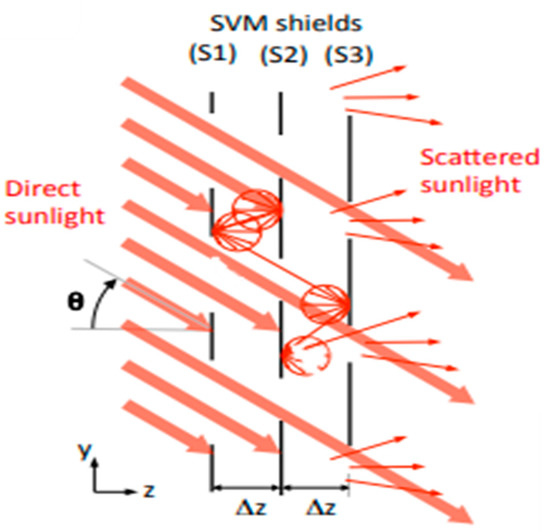
Figure 6. Concept of the direct to diffuse light transformation (DDT) function [30].
Taleb and Antony [34] further endorse this in their experiments, which were conducted by adding Mashrabiya as a 75% tinted, frosted adhesive film to the glazing. A 40% coverage of the glazing unit used the Mashrabiya pattern, and results showed that this could lower the cooling load by 23%. A survey by Alelwani et al. [3] shows that 78% of the participants ranked aesthetics as the most critical factor, and for 58.48%, energy efficiency comes second to aesthetics.
The Mashrabiya has evolved from a simple window screen to a highly complex facade system that may work as a possible shading screen for the entire building, making it more energy efficient [35]. When it comes to commercial high-rise buildings, the most prominent criterion aimed at by contemporary Mashrabiya is their energy efficiency, rather than other functional factors, such as ventilation, or social factors, such as privacy. However, the findings by Alelwani et al. [3] imply that contemporary façades, modelled after Mashrabiya in smaller structures, such as residences, are built solely for pretentious and aesthetic reasons, ignoring the functional features that made them environmentally viable in the first place.
6. Material and Construction
The primary traditional material used for the construction of Mashrabiya is wood, owing to its capability to regulate internal shadows, minimize glare, withstand high temperatures, and influence humidity buffering and airflow cooling [36]. The Mashrabiya was originally constructed using one of three local wood varieties: pine, walnut, or beech. However, craftsmen also incorporated imported woods, such as oak and walnut, from Europe and West Asia, as well as ebony from Somalia, South Sudan, and Ethiopia [30].
The construction of Mashrabiya in Bahrain and the Middle East has been notably influenced by the region’s local materials and skilled craftsmen, making it unique to its region. When solid wood was not available as a local source, gypsum clay was utilized instead. Gypsum’s porous quality made it well-suited for use in humid regions. Nonetheless, the design constraints and decorative features of gypsum-based Mashrabiya were considerably different from those made from wood [31].
Almerbati et al. [37] investigated the feasibility of developing parametric Mashrabiya via 3D printing technology, with the objective of identifying the implications for new digital craftsmen and fabricators. Their research focused on developing input data that would enable the generation of assemblies capable of delivering functional performance, while also supporting cultural development, as cited by Almurbati [36]. The emergence of 3D printing technologies over the past two decades has opened up the possibility of using the performative analyses of existing Mashrabiya to inform the development of new parametric models, which can be customized for specific sites and produced using large-scale 3D printing [36] (Figure 7).
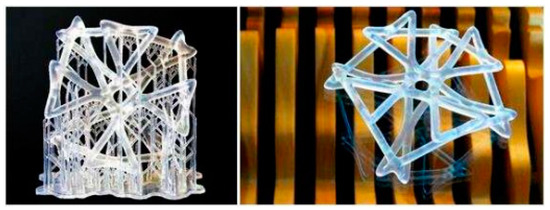
Figure 7. The use of 3D printing enables the production of parts that cannot be made in any other fashion, 10 cm by 10 cm test prints [37].
The key findings of Almerbati’s [37] research suggest that the utilization of parametric Mashrabiya provides the digital artisan with the opportunity to integrate advanced construction and production techniques into the conventional art form. Although the cost of 3D printing the Mashrabiya may currently be equivalent to—or higher than—the cost of traditional fabrication methods, factoring in factors such as durability and scope, it can be predicted that, as technology progresses, the cost of 3D printing will decrease. Conversely, the scarcity of skilled craftsmen is expected to increase, thus driving up the cost of conventional fabrication.
Additive manufacturing is the procedure of solidifying powder or liquid by using a melting laser or a binding agent [38]. Almerbati et al. [15], in their research based in the Middle East, explore the possibility of innovative construction methods, such as additive manufacturing (AM), for the production of Mashrabiya. The result indicates that creating a Mashrabiya model using additive manufacturing (AM) technology is feasible, and it would represent an innovative step forward for Bahrain and the wider Middle East region, as there is a strong appreciation for personalized and craftsman-free products.
7. Cost
The materials used for production heavily affect the cost of Mashrabiya. Traditional Mashrabiya, which are made from wood (mainly teak), average about $2788, which is almost four times the price of contemporary GRC (Glass fibre Reinforced Concrete) or marble and granite moulded products [17].
When compared to a standard wood or aluminium window, the cost of Mashrabiya construction has increased. Nonetheless, a Mashrabiya, according to Alothman et al. [23], still offers advantages over mechanical air conditioners, which waste a lot of energy and have high operating expenses.
In the most intricate Mashrabiya, a single square yard of latticework can be composed of as many as 2000 components [39], and an average piece of Mashrabiya latticework can take 2 to 3 days to complete [40]. This level of time intensive labour and skills required to assemble them can result in very high costs of production. The research conducted by Headley et al. [41] seeks to alleviate this problem by replacing craftsmanship with new manufacturing techniques such as 3D printing. According to Crolla and Williams [42], as cited by Headley et al. [41], it can be hypothesized that additive manufacturing may become cost-competitive with traditional manufacturing, as the cost of this technology may decrease significantly.
The increase in the cost of production of traditional Mashrabiya has highly influenced users to move on to cheaper contemporary forms. The study conducted in Bahrain found that most Bahraini locals and residents would be willing to spend less than $663 on a window treatment, which is about a quarter of the cost of a solid wood Mashrabiya [41]. This finding, compiled with the survey by Alelwani et al. [3] showing that 78% of the users considered aesthetics to be the most important factor of Mashrabiya, proves that, regardless of the functionality, modern users would turn to contemporary Mashrabiya purely for aesthetics and the reduction in the initial cost.
8. Exploring Determinants of Public Acceptance of Energy Saving Initiatives
Over the past few years, there has been a significant surge of interest in understanding consumer perspectives, attitudes, and opinions regarding green energy, encompassing energy-saving measures as well as the adoption of renewable energy technologies [43]. Wüstenhagen et al. [44], in his research on the social acceptance of renewable energy innovations, “clarified social acceptance understanding, distinguishing three dimensions, namely, socio-political acceptance, community acceptance, and market acceptance”, as cited by [45]. These factors can be considered when exploring the adoption and acceptance of Mashrabiya as sustainable architectural features.
The survey by Alewani et al. [3] revealed that 61.15% of respondents considered privacy to be highly important and influential in their choice of window or opening for their homes. Experts interviewed in the same study unanimously recognized privacy as the foremost consideration for incorporating Mashrabiya into the Saudi Building Code. Previous studies have consistently emphasized privacy as the primary factor when evaluating the importance of Mashrabiya [17][21][46]. Therefore, the Mashrabiya’s acceptance in the social context heavily relies on its ability to symbolize privacy, reflecting the cultural values of Saudi society.
Community acceptance of Mashrabiya can be influenced by various factors, with cost being a significant consideration. The importance of income level and residence ownership status in the adoption of microgeneration technologies within a community is highlighted in the research of Karytsas et al. Lower incomes and non-property ownership are identified as potential barriers to the installation of such technologies [43]. Previous studies conducted within the Bahraini community of Saudi Arabia reveal that residents are willing to pay only a fraction of the cost of a traditional wooden Mashrabiya for a window treatment [41]. These findings have implications for assessing the feasibility and acceptance of Mashrabiya, as its implementation may require certain financial resources, and it may be more suitable for certain communities than others.
The research conducted by Karytsas et al. further emphasizes the impact of subsidies and cost-related factors on the installation of microgeneration technologies. It suggests that subsidies and incentives can improve market conditions and, in turn, contribute to the adoption of such systems [43]. This finding can be applied to the integration of Mashrabiya in residences, as it underscores the importance of financial incentives and cost-effectiveness when considering energy efficient initiatives for the public.
References
- Middle East. Available online: https://www.climatecentre.org/wp-content/uploads/RCCC-ICRC-Country-profiles-Region_Middle_East.pdf (accessed on 12 May 2023).
- Binzagr, S.M.O.S. Vernacular Saudi Arabian Architectural Techniques: Revival to Modern Saudi. WIT Trans. Built Environ. 2020, 197, 99–111.
- Alelwani, R.; Ahmad, W.M.; Rezgui, Y. Public Perception of Vernacular Architecture in the Arabian Peninsula: The Case of Rawshan. Buildings 2020, 10, 151.
- Fathy, H. Natural Energy and Vernacular Architecture: Principles and Examples with Reference to Hot Arid Climates, 5th ed.; University of Chicago Press: Chicago, IL, USA, 1986; pp. 105–117.
- Al-Naim, M.A. Identity in Transitional Context: Open-Ended Local Architecture in Saudi Arabia. Int. J. Archit. Res. 2008, 2, 125–146.
- Bardeesi, B.; Muhrji, D.; Gutub, G.; Al-Ahdal, H.; El-Shorbagy, A.M. The Lost Identity of Jeddah. Civ. Eng. Archit. 2022, 10, 2180–2186.
- Eljaouhari, K.; Amhamdi, L.; Bouayad, L. Mashrabiya Contemporary Design: Cultural Anchor and Environmental Performance. Impact Int. J. Res. Eng. Technol. 2020, 8, 1–12.
- Provinces Map of Saudi Arabia. Available online: https://www.orangesmile.com/travelguide/saudi-arabia/country-maps-provinces.htm (accessed on 12 May 2023).
- Alrashed, F.; Asif, M. Trends in Residential Energy Consumption in Saudi Arabia with Particular Reference to the Eastern Province. J. Sustain. Dev. Energy Water Environ. Syst. 2014, 2, 376–387.
- Dehwah, A.H.; Asif, M.; Rahman, M.T. Prospects of PV application in unregulated building rooftops in developing countries: A perspective from Saudi Arabia. Energy Build. 2018, 171, 76–87.
- Saudi Arabia: Total Population from 2018 to 2028. Available online: https://www.statista.com/statistics/262467/total-population-of-saudi-arabia/ (accessed on 12 May 2023).
- Al-Sur, M.; Trigunarsyah, B. Analyzing the Literature for the Link between the Conservative Islamic Culture of Saudi Arabia and the Design of Sustainable Housing; Queensland University of Technology: Brisbane, QL, Australia, 2012.
- Shehri, A. Electricity Industry in Saudi Arabia: An Overview. In Proceedings of the Saudi Water and Power Forum, Jeddah, Saudi Arabia, 1–4 November 2008.
- Statista. Available online: https://www.statista.com/statistics/975281/saudi-arabia-residential-electricity-consumption/#:~:text=As%20of%202021%2C%20the%20volume,around%20120.65%20terawatts%20per%20hour (accessed on 12 May 2023).
- Vision 2030. Available online: https://www.vision2030.gov.sa/ (accessed on 25 January 2023).
- Saudi Census. Available online: https://saudicensus.sa/ (accessed on 27 January 2023).
- Almerbati, N.; Ford, P.; Taki, A.; Dean, L. From Vernacular to Personalised and Sustainable. In Proceedings of the Across: Architectural Research through to Practice: 48th International Conference of the Architectural Science Association, Genoa, Italy, 10 December 2014.
- Bagasi, A.A.; Calautit, J.K.; Karban, A.S. Evaluation of the Integration of the Traditional Architectural Element Mashrabiya into the Ventilation Strategy for Buildings in Hot Climates. Energies 2021, 14, 530.
- El Semary, Y.M.; Attalla, H.; Gawad, I. Modern Mashrabiyas with High-tech Daylight Responsive Systems. Acad. Res. Community Publ. 2017, 1, 11.
- Abdelkader, R.; Park, J.-H. Sustainable Building Façades: Modern Usages of The Traditional Mashrabiya. Open House Int. 2018, 43, 69–76.
- Abdelkader, R.; Park, J.H. The Evolving Transformation of Mashrabiya as a Traditional Middle Eastern Architecture Element. Int. J. Civ. Environ. Eng. IJCEE IJENS 2017, 17, 15–20.
- Sabry, H.M.K.; Mohammad, S.K. “Mushrabiyya” Patterns and Parameters: An Experimental Analysis for Daylighting Performance. In Proceedings of the International Conference of Sustainable Energy Technologies and Asessments, Katowice, Poland, 20 January 2011.
- Alothman, H.; Akçay, A.Ö. A Theoretical Framework for the Evaluation from the Traditional Mashrabiya to Modern Mashrabiya. J. Hist. Cult. Art Res. 2017, 6, 107–121.
- Ashour, A.F. Islamic Architectural Heritage: Mashrabiya. WIT Trans. Built Environ. 2018, 177, 245–253.
- Alothman, H. An Evaluate and Critical Study of Mashrabiya in Contemporary Architecture. Master’s Thesis, Near East University, Nicosia, Cyprus, October 2017.
- Baarimah, A. Redefining the Traditional Mashrabiya Improving Daylight Performance, Privacy, And Radiant Heating Utilizing Adaptive Diffused Shading in Hot Arid Climate. Master’s Thesis, University of Arizona, Tucson, AZ, USA, 12 November 2019.
- Aljawder, H.M.; El-Wakeel, H.A. Evaluating the Performance of a Daylighting Traditional Device, The Mashrabiya, In Clear Sky Conditions: Case Study of a Traditional Bahraini House. WIT Trans. Built Environ. 2019, 191, 395–409.
- Salama, H.M. Mashrabiya in Islamic architecture between idea authenticity and applying novelty. J. Archit. Arts Humanist. Sci. 2019, 4, 704–731.
- Giovannini, L.; Lo Verso, V.R.; Karamata, B.; Andersen, M. Lighting and energy performance of an adaptive shading and daylighting system for arid climates. Energy Procedia 2015, 78, 37–375.
- Karamata, B.; Giovannini, L.; Verso, V.L.; Andersen, M. Concept, Design and Performance of a Shape Variable Mashrabiya as a Shading and Daylighting System for Arid Climates. Energy Procedia 2015, 78, 370–375.
- Taşkan, D.; Ismaeel, A.B. An Architectural Element: Mashrabiya. Art Sanat. 2022, 17, 475–496.
- Madan, B.S.; Saxena, S. Islamic Architectural Heritage: Mashrabiya, from Tradition to Innovation. Res. Rev. J. Archit. Des. 2021, 3, 1–13.
- Bagasi, A.A.; Calautit, K.J. Experimental Field Study of the Integration of Passive and Evaporative Cooling Techniques with Mashrabiya in Hot Climates. Energy Build. 2020, 225, 110325.
- Taleb, H.M.; Antony, A.G. Assessing different glazing to achieve better lighting performance of office buildings in the United Arab Emirates (UAE). J. Build. Eng. 2019, 28, 101034.
- Nasr, A.E.H.; Baioumy, N.F.; Elwahed, A.G.A. Application of the Mashrabiya philosophy in contemporary architecture. J. Archit. Art Humanist. Sci. 2020, 7, 103–118.
- Abiya. Available online: https://www.abiya.ae/knowledge-nehal/3d-printing-the-ideal-manufacturing-process (accessed on 2 May 2023).
- Almerbati, N.; Headley, D.; Ford, P.; Taki, A. From Manual to Hybrid, Parametric Mashrabiya. Int. J. Architecton. Spat. Environ. Des. 2016, 10, 29–39.
- Excell, J.; Nathan, S. The Rise of Additive Manufacturing. Engineer 2010, 24.
- Beyond the Façade. Available online: https://allaccessarts.com/beyond-the-facade-mixed-use-architecture-the-mashrabiya-system/ (accessed on 3 May 2023).
- Mashrabiya, A. Day of Art and Adventure. Available online: http://www.touregypt.net/featurestories/mashrabiya.htm (accessed on 3 May 2023).
- Headley, D.; Almerbati, N.; Ford, P.; Taki, A. From Research to Practice: Exploring 3D Printing in Production of Architectural Mashrabiya. In Living and Learning: Research for a Better Built Environment; University of Melbourne: Melbourne, VIC, Australia, 2015; pp. 1009–1017.
- Crolla, K.; Williams, N. Smart Nodes: A System for Variable Structural Frames with 3D Metal-Printed Nodes. In Proceedings of the ACADIA 14: Design Agency, the 34th Annual Conference of the Association for Computer Aided Design in Architecture, Los Angeles, CA, USA, 23–25 October 2014; pp. 311–316.
- Karytsas, S.; Choropanitis, I. Barriers against and actions towards renewable energy technologies diffusion: A Principal Component Analysis for residential ground source heat pump (GSHP) systems. Renew. Sustain. Energy Rev. 2017, 78, 252–271.
- Wüstenhagen, R.; Wolsink, M.; Bürer, M.J. Social acceptance of renewable energy innovation: An introduction to the concept. Energy Policy 2007, 35, 2683–2691.
- Karytsas, S.; Vardopoulos, I.; Theodoropoulou, E. Factors Affecting Sustainable Market Acceptance of Residential Microgeneration Technologies. A Two Time Period Comparative Analysis. Energies 2019, 12, 3298.
- Elwan, M.M. The role of traditional Lattice window "Mashrabiya" in delivering singlesided ventilation- A CFD Study. Int. J. Eng. Trends Technol. 2020, 68, 154–161.
More
Information
Subjects:
Architecture And Design
Contributors
MDPI registered users' name will be linked to their SciProfiles pages. To register with us, please refer to https://encyclopedia.pub/register
:
View Times:
4.4K
Revisions:
2 times
(View History)
Update Date:
17 Jul 2023
Notice
You are not a member of the advisory board for this topic. If you want to update advisory board member profile, please contact office@encyclopedia.pub.
OK
Confirm
Only members of the Encyclopedia advisory board for this topic are allowed to note entries. Would you like to become an advisory board member of the Encyclopedia?
Yes
No
${ textCharacter }/${ maxCharacter }
Submit
Cancel
Back
Comments
${ item }
|
More
No more~
There is no comment~
${ textCharacter }/${ maxCharacter }
Submit
Cancel
${ selectedItem.replyTextCharacter }/${ selectedItem.replyMaxCharacter }
Submit
Cancel
Confirm
Are you sure to Delete?
Yes
No




